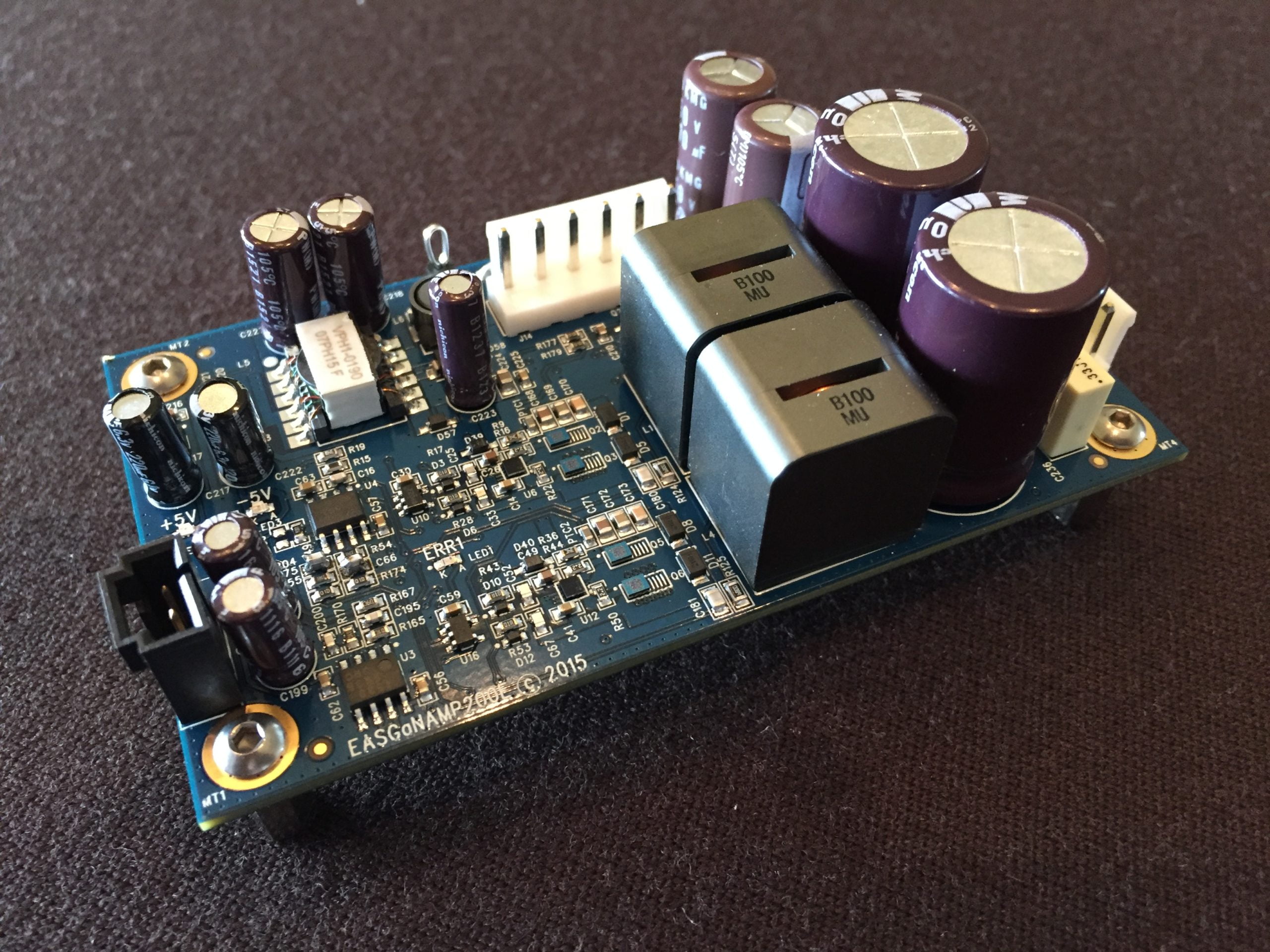It’s the time of year for saving money!
Class A has been the serious audiophile’s gold standard for decades. Today however, we are at the early stages of a seismic shift towards widespread Class D audiophile adoption. Why? Because a new type of Class D audio is quickly approaching the performance of Class A, with benefits not enjoyed by the reigning incumbent.
Home theater systems. Active subwoofers. High-end automotive systems. Even hearing aids. Several well-known companies are already providing high-end Class-D amplifiers given the many benefits they deliver. For example, Class D audio amplifiers have lower power dissipation and produce less heat, save circuit board space, and extend battery life in portable systems. Further, the opportunity to remain in a digital world from input to output provides Class D the ability to retain audio integrity, not to mention enable much higher efficiency.
However, while the benefits of Class D abound, historically, these systems had largely been relegated to lower-power or lower-quality audio systems for general use. The technical reason is simple: to meet the required distortion performance targets (THD+N, TIM and IM), Class D amplifiers have had to resort to using large amounts of feedback to compensate for their poor open-loop performance. By definition, large amounts of feedback introduce transient intermodulation distortion (TIM), which introduces a ‘harshness’ that hides the rich subtleties and color of the music that were intended for the listening experience.
What you may not know is that the root cause for much of this distortion is a power switching device in use by almost every digital system today: the silicon MOSFET (think power transistor). While producing a more efficient amplifier, the use of silicon has been plagued by audio distortion due to imperfect switching, high on-state resistance, and very high stored charge.
But what if there were a Class D transistor technology with switching so precise that it could generate a near perfect power representation of the small audio signal produced by the PWM Modulator, thus reducing (or fully eliminating) the need for these large amounts of feedback? What if the technology were so disruptive that the bandwidth of the output filter could be doubled for High-Definition Audio without fear of increased EMI/EMC problems? And, what if the switching technology of a Class D audio amplifier could boast an “On” resistance with switching losses that were so low that power dissipation became negligible, thereby enabling the world to enjoy the benefits of Class D, at or above the quality of Class A?
In fact, that transistor technology is available today and is increasingly being used by manufacturers to create near perfect sound quality for Class D audio systems. The greater switching speed of Efficient Power Conversion’s (EPC’s) eGaN® FETs allow amplifier designers to increase PWM switching frequencies, reduce dead-time, and drastically reduce feedback; in turn, producing a sound quality previously limited to large, complex, heavy Class A amplifier systems. Further, this innovative high-speed switching technology has already disrupted myriad other industries, including telecommunications, medical, and automotive to name a few.
This transistor technology is called Gallium Nitride (GaN) and is poised to uproot the high-end audio world. In fact, GaN-based Class D is much more power-efficient than traditional, MOSFET-based Class D and offers orders of magnitude better performance. Performance that to many listeners, even surpasses the quality of Class A. At any given product price point, these new Class D solutions can meet, or surpass the quality of today’s linear amplifier solutions. As an example, the eGaN FET-based Class D amplifiers can easily achieve a mid-band THD performance of 0.005%, where a comparable linear amplifier Class would achieve around 0.05%.
If you think about it, this recent improvement in digital amp technology was inevitable. The whole world is going digital (vinyl lovers among us notwithstanding). The opportunity to remain in a digital world, from the audio source all the way to the speakers, maintains clarity that is impossible to achieve when going from a digital recording to an analog amplification system, suffering the degradation of sometimes multiple transitions between the analog and digital audio domains. For a quality Class D audio solution, it is possible to avoid these transitions all the way through the system to the final Output Filter, which is designed for best possible audio reproduction.
Significantly, audio manufacturers are taking notice and incorporating GaN-based Class D FETs in their systems. This is why, in another two or three years you will start seeing a slew of new Class D amps – ones based on GaN – rolling out to the market; and, for such varied uses as home theatre, car, boat, portable wireless speakers, along with high-fidelity home systems.
A high-definition eGaN FET-based system with higher PWM switching frequency, reduced feedback, and higher bandwidth produces the sound that has the warmth and sonic quality that audiophiles demand; while actually improving upon the power efficiency of traditional Class D. Class A audio’s historic lesser child Class D is coming of age with eGaN technology. And in the next decade, these systems will replace Class A technology, as well as the silicon MOSFET Class D systems in active use today.
Skip Taylor’s 40+ years of audio experience has all culminated in the creation of Elegant Audio Solutions, Inc., where he serves as President and leads a group of elite technologists and engineers. Numerous clients use Elegant Audio’s expertise to move their product and technology developments to revolutionary levels of performance. Prior to establishing Elegant Audio Solutions, Skip founded D2Audio Corporation, where he served as Chief Technology Officer. He was also an Executive at Cirrus Logic, where he established the Audio Digital Signal Processing Group, was Director of Engineering at Peavey Electronics, Inc. and led the development of state-of-the-art techniques for target recognition, digital image processing and digital signal processing at Harris Corporation. Skip Taylor has received BSEE (1970), MSEE (1972) and PhD (1977) Degrees in Electrical Engineering at Mississippi State University.








